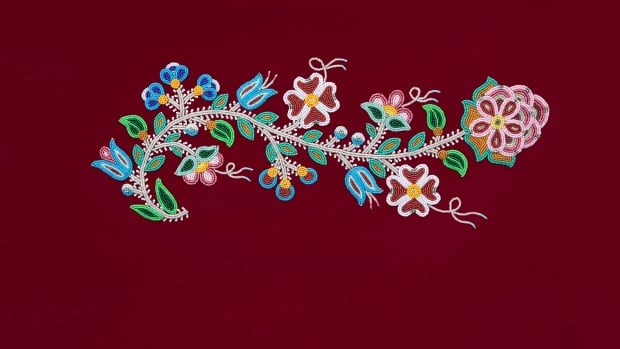
New WAG-Qaumajuq exhibit honours the creation of Manitoba and the Red River Metis' role in its founding
CBC
If it wasn't for pandemic restrictions, a new art exhibit at the Winnipeg Art Gallery-Qaumajuq might not be what it is today.
Kwaata-nihtaawakihk – A Hard Birth got postponed by roughly two years due to the pandemic, but the project's curators and one of its artists said they benefited from the extra time. It was initially supposed to open in 2020 to commemorate Manitoba's 150th anniversary, but public health restrictions delayed it.
Meant to highlight the history of Manitoba and its creation, the exhibit will feature artwork and other significant pieces by Métis, First Nations and non-Indigenous artists and contributors.
Jennine Krauchi, a renowned Métis beadwork artist, says she was grateful for the extra two years to work on a 1.5- by two-metre beaded picture frame that will surround a prominent photo of Métis leader Louis Riel's provisional government.
"If COVID wouldn't have come in at that time … the picture frame wouldn't have been what it is," Krauchi said
Aspects of the piece came to her at various times in the last two years, she said, which made a difference in the final outcome — things like ideas for the border and the beaded corners on the frame.
After years of working on the piece, Krauchi says she's proud it's finally complete.
"I think it was one of the hardest pieces I've done," she said. "It was so close to … the man, Riel, and his provisional government and it was for that picture.
"It was really tough, but yet it was really rewarding."
The picture of Riel and his councillors question was taken in 1870, at the same time Manitoba joined Confederation. At the time, the Métis were promised more than a million acres of land — something they never received.
Riel would be hanged for treason for his acts as leader of the Métis resistance. Since then, the Métis have continued to be displaced, with road allowance communities built away from the Red River settlements.
Guest curator Sherry Farrell Racette, a member of TimiskamingFirst Nation in Quebec, says the delays allowed the entire exhibit more time to grow.
"We … felt a little bit more empowered to tell a bigger story," said Racette, who is an associate visual arts professor at the University of Regina.
One of the focal points of the exhibit is the story of a young woman who was involved in opposition to the provisional government.

 Run 3 Space | Play Space Running Game
Run 3 Space | Play Space Running Game Traffic Jam 3D | Online Racing Game
Traffic Jam 3D | Online Racing Game Duck Hunt | Play Old Classic Game
Duck Hunt | Play Old Classic Game